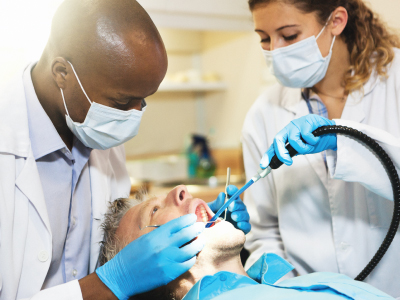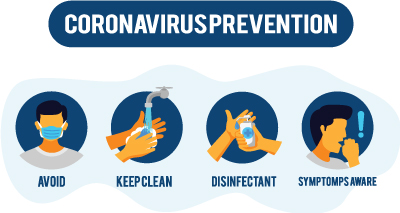Dental Emergencies
Emergency Dentist in San Antonio
Emergency Dental Scenarios
Our busy lives and schedules make it easy to overlook small problems with our teeth or gums. Dental issues can be potentially serious and should not be ignored. Ignoring a dental problem long enough can raise the risk of permanent damage. Waiting to address a dental emergency often results in a more expensive treatment down the road. Here are some ways to help temporarily relieve your dental discomforts.
Here is a list of the most common dental emergencies we see:
- Toothache
- Chipped or broken teeth
- Knocked-out tooth
- Extruded (partially dislodged) tooth
- Lost filling
- Lost crown
- Broken brace wires
- Loose brackets and bands
- Abscess
- Injury to the gums, tongue, cheeks and lips that result in bleedings
Have a Toothache?
First, thoroughly rinse your mouth with warm water. Remove any lodged food with dental floss. Apply a cold compress to the outside of your mouth or cheek if your mouth feels swollen. Avoid put aspirin or any other painkiller against the gums near the aching tooth, it may irritate the gum tissue. Call our office as soon as possible to see the dentist.
Chipped or Broken Teeth
Save any chipped teeth or pieces of the tooth. Start by rinsing your mouth and any broken pieces with warm water. If there’s bleeding, apply pressure with a piece of gauze to the area for about 10 minutes or until the bleeding stops. A cold compress on your cheek or lip near the broken/chipped tooth will help keep any swelling down and should relieve pain. Call our office as soon as possible to see the dentist.
Knocked-out Tooth
Recover the tooth, hold it by the crown and rinse off the tooth root with water if it’s dirty. Leave any attached tissue fragments. If possible, try to put the tooth back in place. Make sure it’s facing the right way. Never force it into the socket. If it’s not possible to reinsert the tooth in the socket, put the tooth in a small container of milk (or cup of water that contains a pinch of table salt, if milk is not available) or a product containing cell growth medium, such as Save-a-Tooth. In all cases, see your dentist as quickly as possible. Knocked out teeth with the highest chances of being saved are those seen by the dentist and returned to their socket within 1 hour of being knocked out.
Extruded (Partially Dislodged) Tooth
See your dentist right away. Until you reach your dentist’s office, to relieve pain, apply a cold compress to the outside of the mouth or cheek in the affected area. Take an over-the-counter pain reliever (such as Tylenol or Advil) if needed.
Lost Filling
As a temporary measure, stick a piece of sugarless gum into the cavity (sugar-filled gum will cause pain) or use an over-the-counter dental cement. See your dentist as soon as possible.
Lost Crown
If the crown falls off, make an appointment to see your dentist as soon as possible and bring the crown with you. If you can’t get to the dentist right away and the tooth is causing pain, use a cotton swab to apply a little clove oil to the sensitive area (clove oil can be purchased at your local drug store or in the spice aisle of your grocery store). If possible, slip the crown back over the tooth. Before doing so, coat the inner surface with an over-the-counter dental cement, toothpaste, or denture adhesive, to help hold the crown in place. Do not use super glue!
Broken Braces Wires
If a wire breaks or sticks out of a bracket or band and is poking your cheek, tongue or gum, try using the eraser end of a pencil to push the wire into a more comfortable position. If you can’t reposition the wire, cover the end with orthodontic wax, a small cotton ball, or piece of gauze until you can get to your orthodontist’s office. Never cut the wire, as you could end up swallowing it or breathing it into your lungs.
Loose Brackets and Bands
Temporarily reattach loose braces with a small piece of orthodontic wax. Alternatively, place the wax over the braces to provide a cushion. See your orthodontist as soon as possible. If the problem is a loose band, save it and call your orthodontist for an appointment to have it recemented or replaced (and to have missing spacers replaced).
Abscess
Abscess are infections that occur around the root of a tooth or in the space between the teeth and gums. Abscesses are a serious condition that can damage tissue and surrounding teeth, with the infection possibly spreading to other parts of the body if left untreated so see your dentist right away.
To ease the pain and draw the pus toward the surface, try rinsing your mouth with a mild salt water solution (1/2 teaspoon of table salt in 8 ounces of water) several times a day.
Injury to the Gums, Tongue, Cheeks and Lips that Result in Bleeding
- Rinse your mouth with a mild salt-water solution.
- Use a moistened piece of gauze or tea bag to apply pressure to the bleeding site. Hold in place for 15 to 20 minutes.
- To both control bleeding and relieve pain, hold a cold compress to the outside of the mouth or cheek in the affected area for 5 to 10 minutes.
- If the bleeding doesn’t stop, see your dentist right away or go to a hospital emergency room. Continue to apply pressure on the bleeding site with the gauze until you can be seen and treated.


 We will be disinfecting all counters, door handle and hard surfaces in the waiting room at regular intervals. Also, we will ask all patients to use disinfection wipes that the front desk team members will provide before signing in and checking out. We as a rule disinfect hard surfaces and equipment in our operatories based on infection control guide lines.
We will be disinfecting all counters, door handle and hard surfaces in the waiting room at regular intervals. Also, we will ask all patients to use disinfection wipes that the front desk team members will provide before signing in and checking out. We as a rule disinfect hard surfaces and equipment in our operatories based on infection control guide lines. Please keep your regular dental appointment if you are not ill or have not come into contact with ill patients.
Please keep your regular dental appointment if you are not ill or have not come into contact with ill patients.